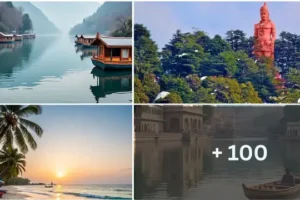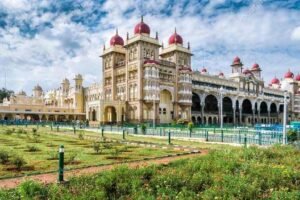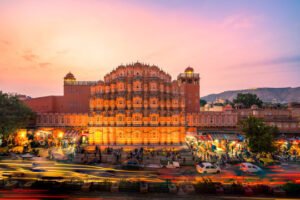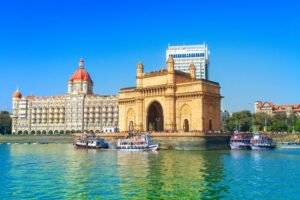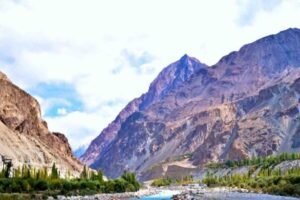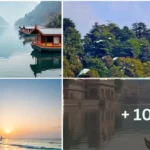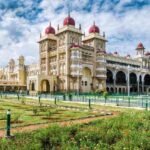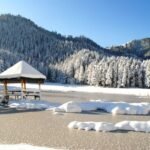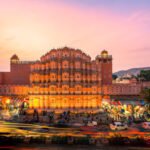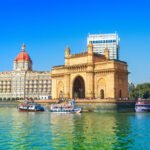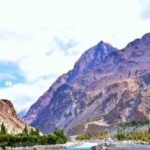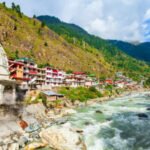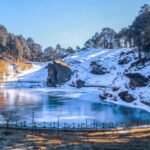Barot Valley: A Guide for Your Next Adventure
Barot Valley, Collection of Best places to Visit 2024: Lets talk about the riveting paragliding paradise of Mandi, The Barot Valley. Barot Valley lies on the bank of Uhl river providing stunning nature’s view. This valley is the paradise for the travelers who wants to quench their thirst for trekking, camping, fishing and many more.
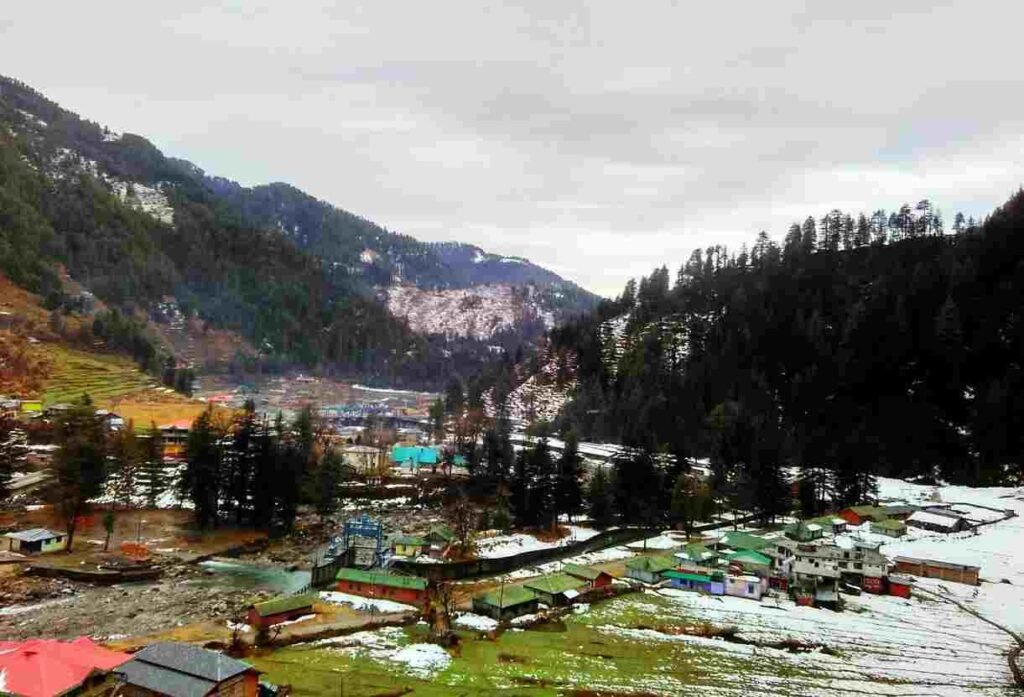
The reservoir of Shanan power project built by Britishers is located here and adds to the scenic beauty of Barot. Barot is also the Gateway to the Nargu Wildlife Sanctuary spread over area of 278 sq. kms. It is the home of Monal, Wild Cats, Monkeys and the Black Bear. Barot Valley is also the base for trek routes to Kullu & Kangra Valleys. This area is also famous for vegetables and pulse production. It has beautiful sceneries all around which attracts everyone. Thousands of tourists visit this place every year.
Barot Valley, Collection of Best places to Visit 2024
Best Places to Visit in Barot Valley 2024
Uhl River
Originating from Thamsar Glacier in Dhauladhar Range of Himalayas flows through Uhl Valley crossing villages like Badagram and Barot. It finally meets the Beas river approximately 5m downstream from Pandoh. Tourists can indulge in activities like fishing and camping, this is one of the most famous places to visit in Barot. Flanked by Oak forests and Deodar, you can experience nature’s glory to the fullest in this area.
The two tributaries of Uhl river are:
- Lumba Dugh: This tributary joins the Uhl from the left bank near the village of Barot. The Lumba Dugh also originates in the eastern part of the Dhauladhar Range and flows past Luhardi village before meeting the Uhl.
- Bhubhu: Another tributary joins the Uhl from the right bank near the temporary settlement of Palachak.
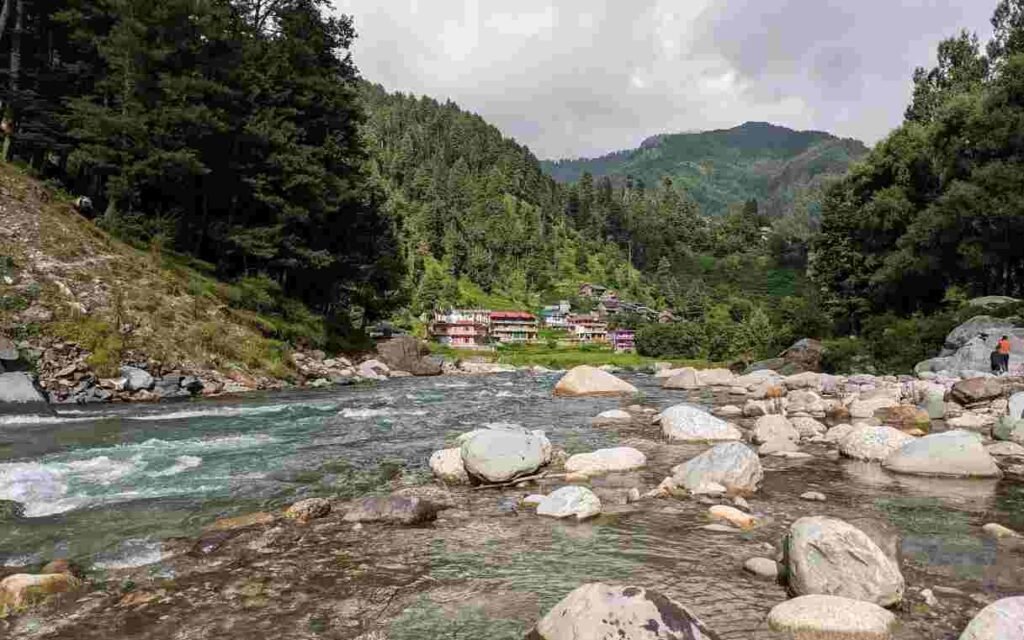
Nargu Wildlife Sanctuary
Nagru Wildlife Sanctuary is the pristine natural heaven located in the banks of Uhl river. The sanctuary lies on the east side of the Uhl River and covers an area of approximately 132.37 square kilometers. It was notified by the Government of Himachal Pradesh in 1999. The slopes of the sanctuary are blanketed with Alpine forests.
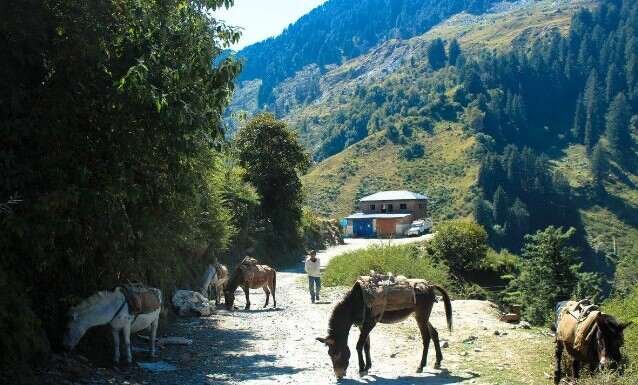
There is hugh biodiversity present in this sanctuary:
- Leopards
- Barking deer
- Black bear
- Ghoral
- Jackal
- Flying squirrel
- Himalayan monal
- White-crested kalij
- Chukor
The sanctuary plays a crucial role in protecting and preserving local biodiversity, including various flora and fauna.
Dev Pashakot Temple
The Dev Pashakot Temple is a truly remarkable and ancient temple nestled in the Himalayas. The temple is situated near Pashakot, a serene and beautiful area. To reach the temple, one must trek down for about 15 minutes from the main road. The descent is peaceful, and the climb back up takes around 30 minutes. The temple is located near a river at the base of a hill, creating an idyllic environment.
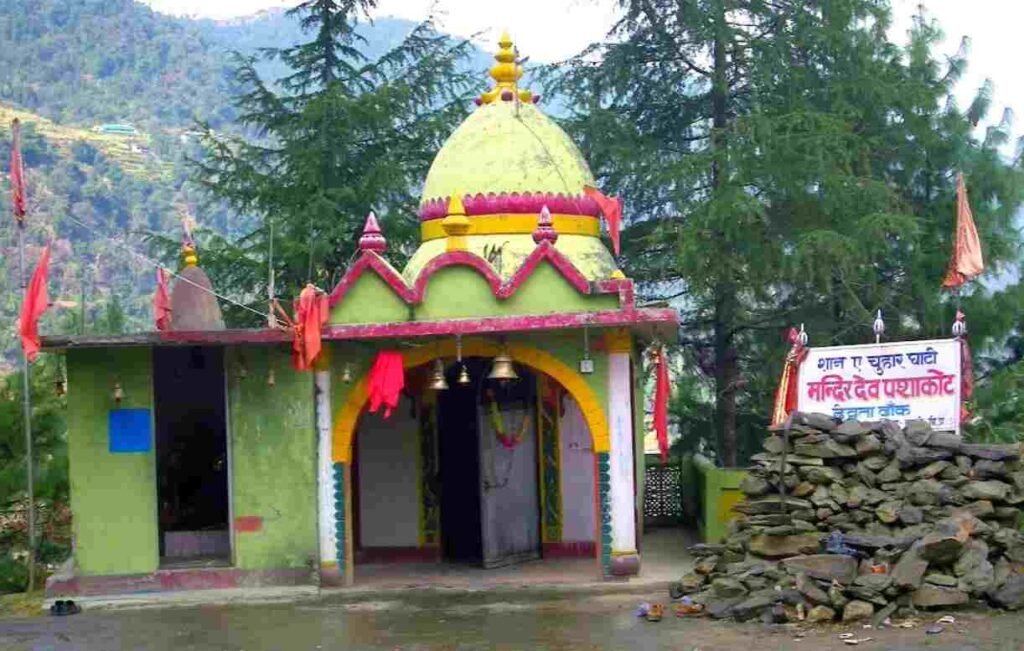
Long ago, devoted individuals constructed this temple to honor a local deity believed to reside in the nearby hills. People visit the Dev Pashakot Temple to find peace and connect with something greater than themselves. The tranquil surroundings and the sound of the river contribute to this spiritual experience.
While exploring the area, visitors might encounter Himalayan goats. These sturdy animals, known for their long hair, are often seen around the Gaddi community. The Gaddi people, who migrate between different regions during winters and return home in summers, sometimes spend time near the temple with their goats.
Shanan Hydel Project
The Shanan Power House was commissioned in 1932 and is situated 2 km from Jogindernagar. It is the first hydroelectric power project in India with a megawatt capacity.
British Engineer Colonel B.C. Batty and his team collaborated with the then ruler of Joginder Nagar, Raja Karan Sen, to design and create this project. This hydroelectric project is a marvel of engineering and is worth a visit for anyone interested in how dams and power generation work.
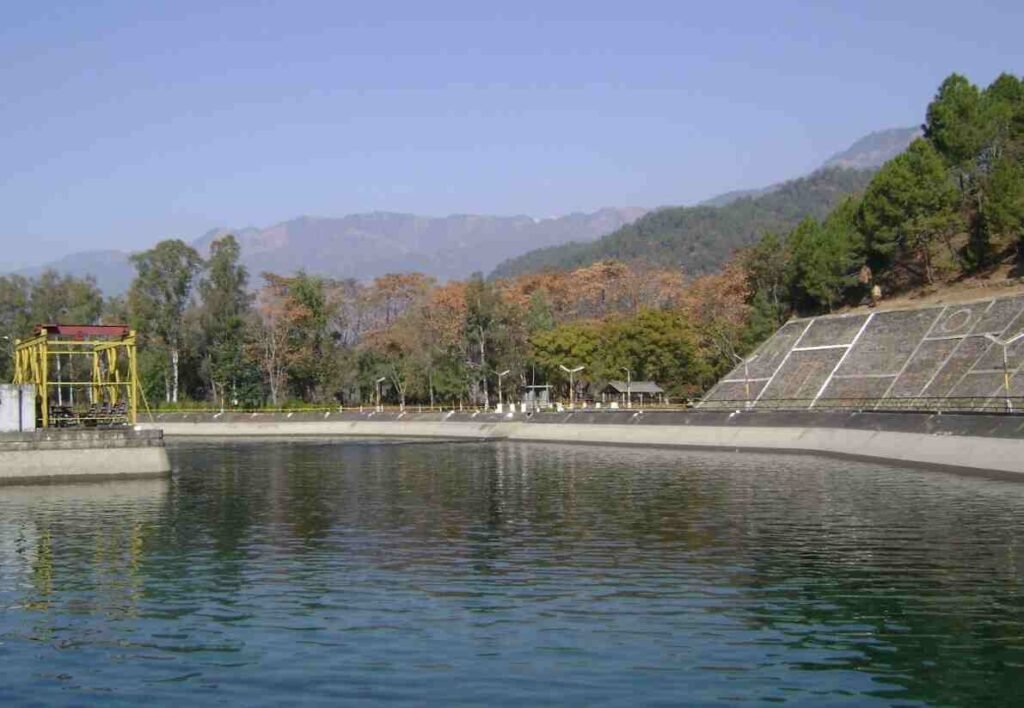
The water conductor system includes a diversion dam at Barot, a tunnel, and penstocks. The three penstocks consist of two original 1.397 m diameter pipes and a third one added in 1982 with a diameter of 1.83 m. To construct the Shanan Power House, a railway line was built from Pathankot to Joginder Nagar to transport men and materials. The original turbines were 4 x 12 MW, but in March 1982, the Punjab Government upgraded them to 4 x 15 MW and added a 50 MW turbine, resulting in a total capacity of 110 MW.
Lapas Waterfall
The hidden gem located about 800 meters from Barot. It’s a beautiful spot for a refreshing dip or a picnic. Lapas village is situated on the Ghatasini-Barot road, just before the Barot bus stand. The village itself is quaint, and there are no road signs. You’ll need to ask locals for directions to the waterfall.
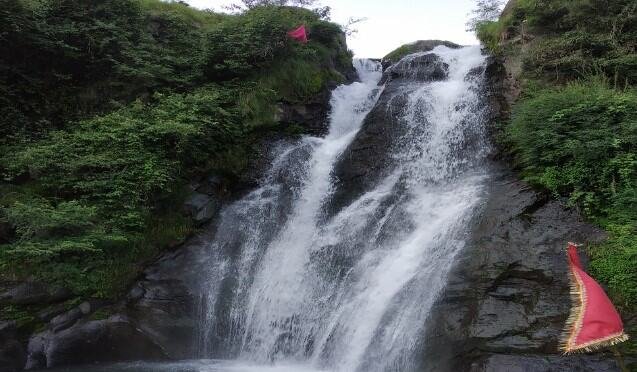
Lapas Waterfall is crystal clear, cold, and charming. It’s surrounded by raw natural beauty. During my visit in October 2021, the waterfall was full of water and absolutely mesmerizing. There’s a tea-snack shop nearby and a couple of small tents (4×4 ft.) where you can change clothes.
Here’s how to reach the waterfall:
- Lapas village is situated on the Ghatasini-Barot road, just before the Barot bus stand.
- The village itself is quaint, and there are no road signs. You’ll need to ask locals for directions to the waterfall.
- To reach the waterfall, start by trekking to the village. From there, continue further through huge pastures and farm fields.
- The trek is approximately 12-15 minutes and follows a safe and clean dirt path. It’s not challenging, but do watch your steps.
These are some of the best places to visit near the barot valley.
Best Time to plan trip for Barot Valley
Summer (April to June):
- Ideal Season: During these months, the weather remains pleasant and bearable.
- Activities: You can indulge in trekking, camping, and fishing.
- Why Visit: The valley comes alive with lush greenery, and the Uhl River flows gracefully through the landscape.
Winter (November to February):
- Magical Snowfall: Winter brings a magical spell of snowfall to Barot Valley.
- Sightseeing: Explore the valleys and enjoy the picturesque views.
- Weather: Although it gets chilly, the snow-covered landscape is enchanting.
Monsoon (July to September):
- Avoid Monsoons: Barot receives heavy rainfall due to its dense forests and high altitude.
- Not Recommended: Trekking and outdoor activities become challenging during this season.
How to reach Barot Valley
By Air:
The nearest airport to Barot is Kangra Airport (Dharamsala) (IATA: IXD), located about 120 kilometers away. From there, you can take a taxi or cab to Barot. The drive takes approximately 4 hours through scenic mountain roads.
By Bus:
- Reach Ghatasani on the Mandi-Pathankot highway. Buses from various starting points (such as Manali, Bir, or Delhi) ply to Ghatasani.
- From Ghatasani, board a bus going via Barot town. Buses operate throughout the day, starting early in the morning around 8 AM.
By Train:
The nearest railway station to Barot is Jogindernagar Railway Station, located about 40 kilometers away. From Jogindernagar, you can take a taxi, cab, or Himachal Road Transport Corporation (HRTC) bus to Barot. The journey by bus takes around 2-3 hours.
Here’s a breakdown of the different routes to reach Barot:
- From Delhi:
- Take an overnight train to Jogindernagar Railway Station.
- From Jogindernagar, take a taxi/cab or HRTC bus to Barot.
- From Chandigarh:
- Take a taxi/cab or HRTC bus directly to Barot. This route is shorter than coming from Delhi.
- From Manali:
- Take a taxi/cab or HRTC bus to Barot. Manali and Barot are both located in Himachal Pradesh, so the journey won’t be too long.
Once you reach Mandi, the district headquarters, you can take a local bus or taxi to Barot. The journey from Mandi to Barot is about 65 kilometers and takes approximately 1.5 to 2 hours.
Follow Us on Facebook Page
Frequently Asked Questions about Barot Valley
What id Barot Valley is famous for?
It is famous for its Trout Fish Farm. It is being operated by Fisheries Department and Angling Meet is organized every year.
How many days are good enough for barot valley?
To explore Barot Valley, three days are enough. You can combine this trip with another location like Bir-Billing or Rajgundha Valley.
Which river flows in barot Valley?
The Uhl River is a Himalayan river which is part of the watershed of Beas river.
Does it snow in Barot Valley ?
Average temperature during winters is around -5 degree to 10 degrees. Barot also experiences snowfall in winters.
How to reach Rajgundha from BIR?
Village Rajgundha is 26 kms from Bir via Billing takes 2 hrs by driving no buses in this route only private taxi. Other is through Barot via Badagran village which is 22 km from Barot. Second option via barot is also done by local bus.
Is barot valley worth visiting?
Barot is a quite serene place situated in mandi district of himachal Pradesh. If you want to be in lap of beauty with less people and more of trees, water and mountain this is the best place.
